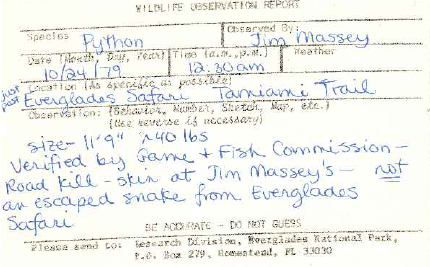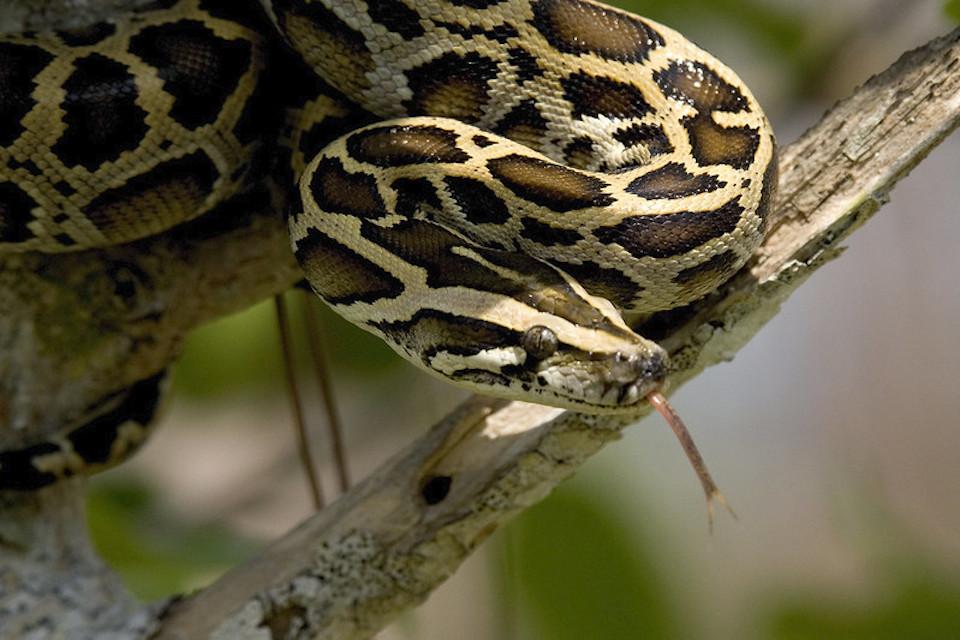
The first record of a Burmese (presumed) python in Everglades National Park is from October 24, 1979. We just recently celebrated a not-so-happy 40th anniversary/NPS
Tools in the toolbox for python control.
Park and partner scientists have tested many methods to slow the spread of these invasive snakes. Everything from visual surveys, to training dogs to locate the snakes, to trapping, to pheromones, and more, have been tried.
Each tool is successful to some extent, but there isn’t yet one method that can remove all Burmese pythons from the Everglades. So, it’s best to use multiple tools at the same time.
Expert snake searchers have removed thousands of pythons from the Everglades in the last few years, but almost all these removals occur only on roads because the pythons are so cryptic that they can’t be seen otherwise.
Trained dogs can sniff out an area where a python may be hiding, but pinpointing exactly where the snake is located is still difficult.
Trapping is possible, but food-baited traps aren’t extremely successful when food is plentiful or with sit-and-wait predators, like pythons, that wait for their food to come to them.
Removing large, reproductive females may help slow Burmese python population growth, and that’s the focus of what’s been nicknamed a “Judas snake” approach.
Large male pythons are caught, implanted with radio transmitters, and released back where they were captured. Biologists use the radio transmitters to regularly find the snake. Because multiple male pythons may find and court female pythons during the mating season, these “Judas snakes” lead researchers to other pythons, including large females, before they have the chance to produce more pythons.
Results are promising, and several large reproductive females have been recently caught using this method. And scientists are trying to make this method work even better.
A major downfall of using Judas snakes is that female pythons aren’t receptive to mating for very long, making it less effective. The US. Geological Survey, in partnership with the National Park Service and university researchers, is working to fix this by implanting the radio-tagged male snakes with female hormones.
Researchers expect that these “feminized” male snakes will exhibit female pheromones that attract other males. They also expect the pheromones to work for a much longer period of time. This should increase the chance of finding Burmese python mating aggregations, and thus facilitate removal of even more pythons.
Will Judas snakes and pheromone research facilitate the removal of all Burmese pythons from the Everglades? Most likely not. But it’s another tool to manage their spread and control their populations.





Comments
Funny how you call the pythons a "cancer" to the national park. We humans are actually like a cancer to this whole planet.
Dont be rediculous
the Python is a threat and this is a serious investation . There are thousands of them they can work thrit way up and they will eat you ... so
while many humans can be cancerous the majority of us care bout our world we live in
Burms dont even eat people there barley killed anyone ever there the gentle gaints of snakes I think invasive burm need to be captured or euthanused but not because there gonna kill you